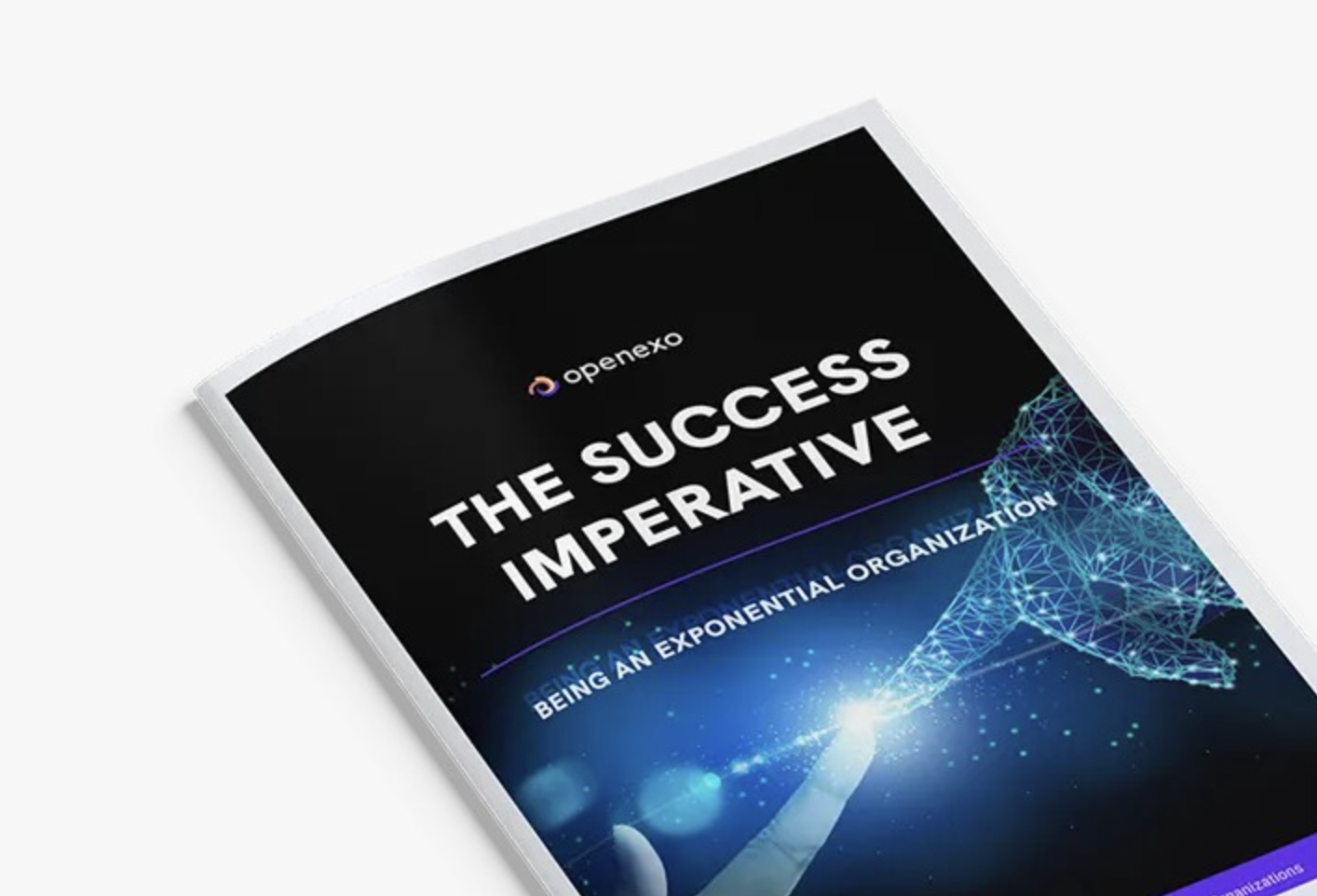
How Much Do You Know About the Brain? 33 Facts That Will Blow Your Mind
The brain contains over 86 billion neurons and 2.5 million gigabytes of storage while generating over 50,000 thoughts daily. In addition, the human brain has 100,000 miles of blood vessels, which is enough to circle the earth four times.
Whether you are aware or not, a brilliant system is right between our ears. Made of fats and proteins, “the brain is the most complex thing in the universe,” says Marwan Sabbagh. Indeed it contains over 86 billion neurons and 2.5 million gigabytes of storage while generating over 50,000 thoughts daily. In addition, the human brain has 100,000 miles of blood vessels, which is enough to circle the earth four times. Not surprisingly, the brain is very powerful and responsible for supporting various processes. Hence, as a part of the central nervous system, it receives and elaborates lots of information to execute multiple functions such as learning, moving, talking, and thinking.
For this reason, studying the human brain is one of the least explored areas in science. Thus several myths and misinformation go in parallel with its investigation and are called “facts” about the brain. Therefore, in this article, I will discuss 33 facts about the brain collected by recent advances in neuroscience to shed light on this study and enhance the awareness of the general audience.
How many…? 9 relevant brain facts about numbers
2% of the total body weight. Do you know how much the human brain weighs? Typically the human brain is 2% of the total body weight, although it consumes 20% of its total energy and oxygen intake.
The brain is 73% water. Thus, it is extremely important to stay hydrated. However, only 2% of dehydration would affect cognitive functions (e.g., memory, attention, learning, etc.) Accordingly, 90 minutes of sweating can temporarily shrink the brain (like one year of aging does!).
The brain weighs about three pounds. But, contrary to popular expectations, the brain is mostly made of fat. Indeed 60% of the dry weight is fat. Moreover, 25% of cholesterol can be found inside the brain, an essential part of brain cells, and also prevents the risk of dementia.
The brain contains around 86 billion brain cells. Contrary to the myth that our brain contains more brain cells than the stars in the Milky Way (which has 200-400 billion stars), the human brain has around 86 billion cells. That’s why it is a very complex system. The brain can be imagined as a central station transmitting tons of information. Indeed, each neuron transmits 1,000 nerve impulses/sec and makes tens of thousands of synaptic contacts to interact with other neurons.
Brain cells are not alike. A piece of brain tissue the size of a grain of sand contains 100,000 neurons and 1 billion synapses communicating with each other. Besides, there are 100,000 specific types of neurons.
The brain needs a constant supply of oxygen. To properly function, the brain needs oxygen. Indeed, a lack of oxygen for just 5 minutes may dramatically cause brain damage to the brain due to the death of brain cells.
The size of a baby’s brain (2 years old) is 80% of adult size and reaches full maturity at 25. Therefore, babies have big heads because this would allow them to accompany the rapid growth of their brains. However, the brain continues its growth until it reaches full maturity at 25. Hence, the reason why teenagers are not entirely in control of their actions; their brains are not yet fully formed.
Information processed by the brain travels up to 268 miles per hour. This velocity is way faster than any other race car. Moreover, when awake, the brain can generate around 20 watts of electricity, a quantity that is more than enough to power a small light bulb.
The brain can produce 48.6 thoughts each minute. For example, the brain is called a “random thought generator” because it can produce a total of 70,000 thoughts every day. In addition, the brain can process the information of something that your eyes have seen for just 13 milliseconds, which is even less than the blink of an eye. Furthermore, to sustain its process, the brain requires 750-1,000 milliliters of blood flow, which would correspond to the quantity of a liter bottle. Indeed, it has been estimated that the brain contains about 400 miles of blood vessels.
How big is…? 3 major brain facts about the size
Size does not define how smart you are. Indeed, the brain of Neanderthals was 10% larger than Homo sapiens’ brains. Moreover, also gender defines the size of the brain. The brain of men is 10% bigger than women, although women have a larger hippocampus which is the area associated with memory. Another example is Einstein’s brain which was smaller (about 2.71 pounds) than the average brain size (about 3 pounds) but made of higher brain density than average. In addition, among animals, humans have the largest brains in terms of size and in comparison to body weight, although way smaller than whales (their brain is 17 pounds!).
Over the years, the brain shrank losing volume. Indeed, over the last 20,000 years, the human brain became smaller, but also smarter.
The size of brain areas grows depending on their usage. Talking again about the hippocampus, which is a central memory system, was proved to differ among learners. Indeed, it was found that taxi drivers in London had a brain that was significantly bigger than average. Not surprisingly, they had to learn to navigate among 25,000 streets.
How does life…? 2 Curious brain facts about lifestyle
High omega-3 intake will protect your brain from aging. You probably have already heard how the environment and lifestyle can impact our health and well-being. Indeed chronic stress and depression were proved to affect the brain by shrinking the volume. Therefore, this would negatively affect cognitive functions such as memory, attention, and learning. In addition, low-fat and very restrictive diets would negatively affect the brain due to low sources of energy and starvation. Consequently, brain cells will eat themselves. However, integrating omega-3 (an essential fatty acid) into the diet positively affects brain volume and aging. So, a diet high in omega-3 would definitely protect the brain from shrinking.
Advances in technology are not really helpful for brain capabilities. In fact, the average IQ dramatically decreased over decades since the late 1800s. Moreover, technologies require multitasking, although the human brain is not programmed for this. Thus, to simultaneously concentrate on multiple tasks, attention span, learning, and short-term memory will be affected, decreasing the overall performance and IQ temporarily. Moreover, the constant exposure to electronic devices such as smartphones would negatively affect 140 proteins in the brain due to electromagnetic frequencies. Besides, having so many Apps and technologies that do everything for us would cause synaptic pruning, which is the loss of neural connections because no longer used and strengthened (e.g., the use of GPS would affect our innate navigation ability and direction).
5 myths and misinformation about the brain
Advances in neuroscience are helpful in clarifying myths and misinformation about the brain and its functioning.
The average attention span is not getting shorter. Contrary to some beliefs, the attention span is not getting shorter, and neither is it comparable with the attention of a goldfish. To reinforce this fact is a lack of scientific evidence that would prove that the human attention span is getting shorter over time.
We use way more than 10% of our brain capacity. Indeed, most of the time we use most of the brain capability, even while sleeping. Besides, skills and personalities such as the “left” and “right” brain myth cannot be so easily lateralized. In fact, we are always empowered by whole-brain functioning.
Alcohol does not destroy brain cells. However, excessive consumption would affect neural connections and connective tissues, consequently the proper functioning. In addition, alcohol consumption prevents the brain from forming new memories, which is why people feel that they do not remember things the night before excessive alcohol consumption. Nevertheless, contrary to the myth that listening to Mozart’s music would improve memory, and empower memory and its functionality, training and exercising by applying memory techniques is a good habit to strengthen this function.
Memory is more than an area. Back to memory, it cannot be just identified with a specific location. Instead, memory is a process in which different areas may be interconnected. Besides, although the brain stops “evolving” at the age of 24, different cognitive functions can still peak at different ages. Indeed, at any age, we can learn different things and be good at certain tasks at different stages of life. For instance, it was found that vocabulary skills would peak later in life compared to other functions.
The number of brain cells (which define “intelligence”) does not change over life. This statement is completely false. Indeed, it was found that the brain is plastic and capable of changing over time. This process is called neuroplasticity which allows the brain to continuously create new cells throughout the process of neurogenesis.
Which shape or function does…? 5 Insights into the brain design
The human brain tissue is soft. Different from what we could expect, the human brain tissue is not dense. Instead, it is very soft and fragile. It looks like the consistency of tofu or gelatin (the reason why post-mortem autopsies leave the brains in formaldehyde to keep their consistency). Moreover, it produces lots of fluids every day, and it floats in the cerebrospinal fluid that is necessary to protect the brain from pumping and hitting itself due to its weight.
The brain can work even with half of it. Due to certain clinical conditions (e.g., seizures), neurosurgeons may opt to remove the half of the brain that causes untreatable symptoms, and they do this procedure called hemispherectomy. Although this surgical procedure appears invalidating, it would not affect the memory or personality of these patients.
The brain feels no pain. In relation to the fact recently discussed above, the brain cannot feel pain because it has no pain receptors even though the feeling of pain is processed in the brain. Several neurosurgical procedures are performed when the patient is awake to test the surgical effect on cognitive and motor functions, and indeed, patients report feeling no pain. But what about the pain caused by headaches, chronic tension, and migraine? Also, in this case, the pain we feel is generated by skin. Joints, sinuses, muscles, or blood vessels that are closely located in the area the pain is experienced. Another interesting example is when eating ice cream, we may feel the brain “freeze.” However, the pain we feel is generated from the mouth.
The brain is like your “genetic” code. Not every physical body is the same, and not every brain is the same. Indeed, each brain has a unique pattern of connections and networks that have been created and modified throughout life. Thus, these neural connections are specific for each individual like fingerprints are. Moreover, research studies based on magnetic resonance imaging (MRI) did show how the personality of extrovert and introvert individuals affect the brain differently. Indeed, extroverts show greater activation in the reward network, whereas introverts show higher gray matter.
The brain can rearrange letters to form and read words. Have you ever tried to read a word in which the order of letters is not correct? Research at the University of Cambridge found that the brain can read a word independently of the order of letters. However, what matter is the first and last letter should be correct and in the right position. Don’t you believe it, do you?
“Aoccdrnig to a rscheearch at Cmabrigde Uinervtisy, it deosn’t mttaer in waht oredr the ltteers in a wrod are, the olny iprmoetnt tihng is taht the frist and lsat ltteer be at the rghit pclae. The rset can be a toatl mses and you can sitll raed it wouthit porbelm. Tihs is bcuseae the huamn mnid deos not raed ervey lteter by istlef, but the wrod as a wlohe. “
The brain performs higher than a supercomputer in 2 pills
There is a reason why technology such as artificial intelligence aims to simulate the human brain's functionality. Indeed, the human brain is the most outbreaking and disruptive system and is capable of beating any competition across ages. Can our brain be compared to a computer or even the internet? Well, you might be surprised to know that our brain is actually way more powerful than computers and below I am going to explain why.
The brain has a storage capacity that is unlimited. Unlike the computer RAM, the brain has a virtually unlimited capacity defined by neural connections and networks created over years and experiences. Some researchers even advanced the hypothesis that the capacity of the brain, in terms of memory storage, is in the range of petabytes, which corresponds to the quantity needed to store the entire internet!
The human brain has a higher processing speed. The human brain beats computers based on the processing velocity. Indeed, the brain can perform 1016 processes each second. Accordingly, research found that the brain is 30 times more powerful than IBM Sequoia which is one of the fastest supercomputers worldwide. Another great example is Japan’s K computer which is well known worldwide to be very powerful. However, when this computer was used to simulate brain activity, it took 40 minutes to process the data fed in. Differently, the brain takes about one second. Quite a huge difference!
7 Facts that make the brain truly amazing
Although the brain can perform higher than a supercomputer, it can also manifest mechanisms that are illogical.
Brain biases make it act and think illogically. Indeed, it was found that there are 200 known cognitive biases and distortions that make the brain think and act in a way that looks counterproductive. Moreover, due to a mix of emotions, context, and frequency of use, also memories are not always reliable. False memories are indeed a fact defining those memories that change over time, affecting our way to think clearly.
70% of thoughts have a negative connotation. It sounds unbelievable, but the majority of daily thoughts (over thousands) are self-critical, pessimistic, and full of fear. Besides, this brings us to the question “are we in control of our life?” the answer is “not really.” Indeed, 95% of taken decisions are determined by the subconscious mind.
The blood barrier saves and protects the brain. A barrier called the blood-brain barrier (BBB) is extremely important to protect the brain from external substances in the vascular system entering the brain. However, there are still some substances that can reach the brain while overcoming this barrier. Nicotine is capable of reaching the brain in 7 seconds, while alcohol takes 6 minutes.
The brain can perceive, exchange, and simulate senses differently. In fact, this condition is called synesthesia and is the condition where one sense can evoke the perception of another. For instance, individuals who experience synesthesia can “taste’ words or “smell” sounds. Although there isn’t a specific scientific explanation of this process, most findings and theories support the hypothesis that these individuals have hyper-connectivity between sensory areas in the brain, followed by a genetic component. But this is not all. Ten brain disorders affect the brain so much that to alter the perception of reality.
Brain cells are “diabetic.” Brain cells need a constant fuel supply to properly function due to their inability to store energy. Nevertheless, a system that works as a reserve supports the brain by sharing energy. Indeed, the liver can decompose previously store fat to generate ketones. These ketones can be used as energy supply instead of glucose.
The brain has a second hidden brain. Have you ever heard about the brain-body connection? This is not just a myth, but it is actually a true fact. The second brain is the intestine containing 100 million neurons. Indeed, gut bacteria have a great responsibility. It generates more than 30 neurotransmitters including 95% of the body’s serotonin which is responsible for our happiness feeling.
A zombie apocalypse might be possible. Although zombies have always been presented in horror movies picturing a scary but unrealistic scenario, this fact is not properly true. Indeed, scientists think that a mutated virus or parasites could attack the brain and while rapidly spreading through the global population would generate this apocalypse of mutants.
Translating myths into real facts
In this article, I discussed 33 facts about the brain to uncover myths and misinformation. Therefore, the readers should now have better clarity and awareness about recent advances in the field of neuroscience regarding the study of the most super powerful system called BRAIN.

ExO Insight Newsletter
Join the newsletter to receive the latest updates in your inbox.









